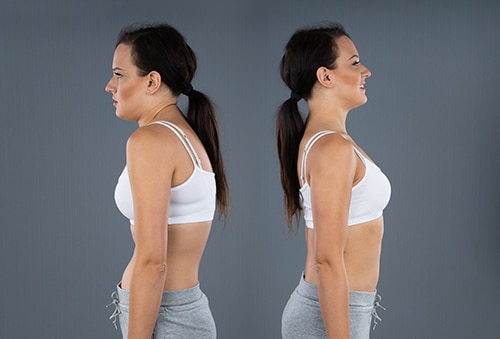Would you like to continue or select additional body parts?

- Home
- Conditions
Kyphosis
-
Kyphosis forces the upper part of the spine to curve excessively, causing an unnatural bend forward. This condition is often referred to as hunchback. While the thoracic spine should have a natural kyphosis between 20 to 45 degrees, postural or structural abnormalities can result in a curve outside that normal range.
-
If you have kyphosis, you will have a visible hump on your upper back. In addition, to others you may appear to be slouching and have noticeable rounding of the shoulders. Other symptoms can include back pain due to the excess pressure on the spine, or breathing difficulties due to pressure on the lungs. In general, the greater the curve, the more serious the condition and the more severe the symptoms.
-
Kyphosis can affect people of any age. It is common during adolescence, which is a time of rapid bone growth. Other causes of kyphosis include aging, especially if you have poor posture, muscle weakness in the upper back, arthritis or other bone degeneration diseases, or injury to the spine.
-
Treatment to correct the curvature of the spine may help reduce the risk of complications later in life, including arthritis and back pain. Pain medication can help relieve symptoms, and physical therapy may be recommended to build strength in the core and back muscles. In adolescents, a brace may help correct the curvature while they’re still growing, and in adults, a spinal fusion may be needed in severe cases. A spinal fusion is done to reduce the degree of curvature and prevent further progression.